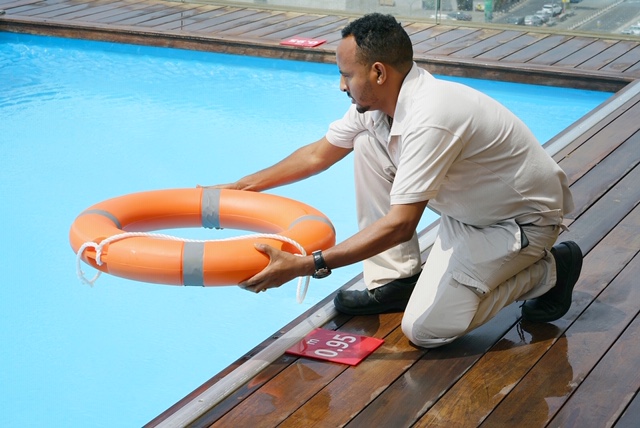Summer is synonymous with swimming. Whether it’s swimming pools, lakes or oceans, families are spending more time outdoors and in the water. It’s all fun and games until someone gets hurt. Usually, that someone is a small child.
Pools are particular dangerous for young children. It’s easy for children to sneak away from the watchful eyes of their parents.
Making pool safety a priority is the first step to preventing accidental drownings.
Pool Safety: Fences and Alarms
The U.S. Consumer Product Safety Commission (CPSC) looked at drownings among children aged 4 and under in California, Florida and Arizona. They found that in the majority of cases (70%), the children were not supposed to be at or in the pool. Among them, 46% of the children were last seen in the house.
Pool fences prevent children from wandering off and falling or jumping into the pool when adults aren’t supervising.
“In 70% of the child drownings in backyard pools, the pool had no fence or the fence was not in compliance with safety bylaws,” says Lalande Personal Injury Lawyers.
Pool fences have been proven to be the most effective way to prevent drownings of young children. For these fences to be most effective, they should be:
- 4 Feet Tall, 4 Sides: The fence should be at least four feet tall and surround the pool completely. The goal is to separate the pool from the house and the rest of the yard.
- Minimal Slat Space: Vertical slats should have no more than 4” of space between them to prevent small children from squeezing through the fence. Minimal slat space also prevents small pets from squeezing through the fence and potentially drowning in the pool.
- Climb-Proof: Pool fences should not have handholds or footholds that would allow children to climb over them. Children should not be able to use lawn furniture or play equipment to get over the top of the fence. Chain-link fences are not recommended, as they are too easy to children to climb up and over.
- Latch: The fence should have a self-latching and self-closing gate that can only be opened outward – away from the pool. The latch should be high enough to be out of the child’s reach: at least 54” from the ground.
Installing a pool fence is the best thing you can do to prevent accidental drownings when children are not supposed to be at the pool.
Alarms offer an additional layer of protection to prevent drownings, as they can alert you when children enter the pool area. Children can be resourceful, and some will find ways to get around or through the fence.
Alarms are no substitute for a fence and are best used in conjunction with a proper pool fence. Ideally, an alarm should be installed on the pool fence gate as well the house doors.
Along with installing a fence and alarm, parents may also want to take a CPR training class and ensure that children take swimming lessons as early as possible. If your child does go missing, check the pool and spa first. Drownings can happen within seconds.




